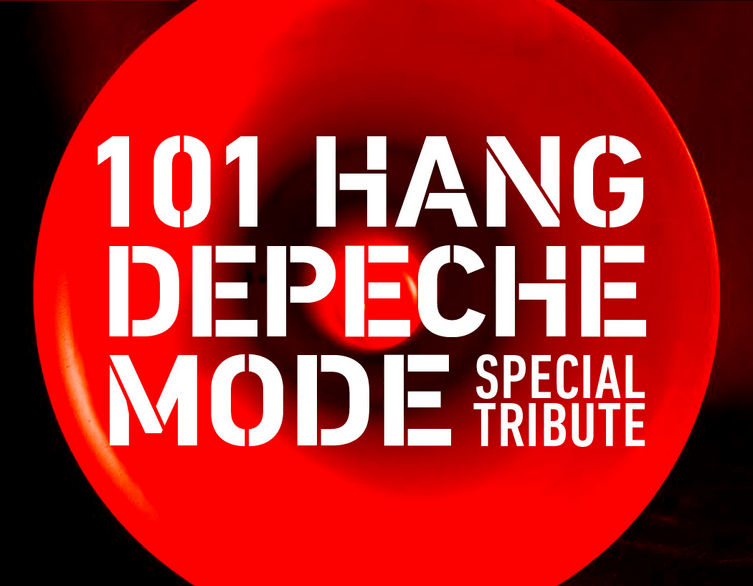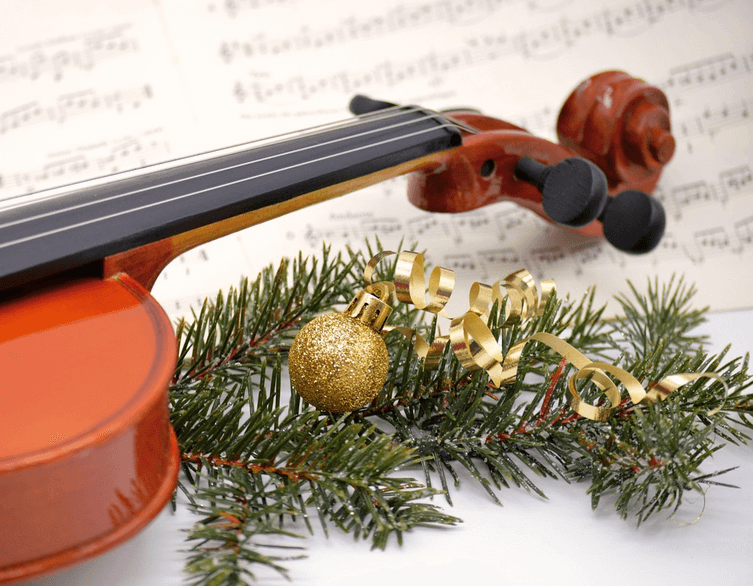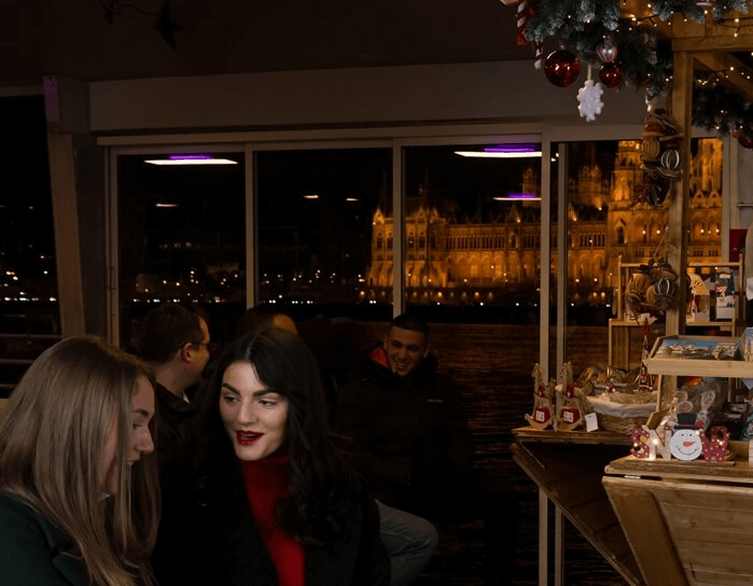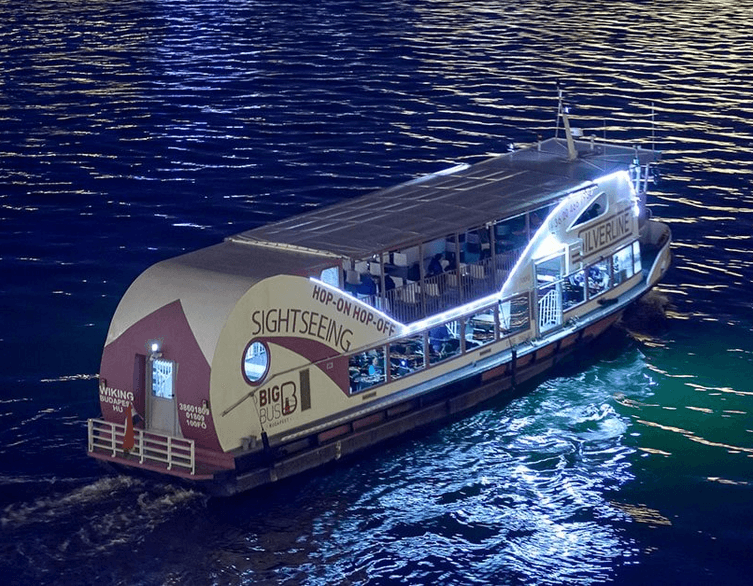Black Celebration: The 101 Hang Depeche Mode Tribute Transforms Budapest This November

When does a concert become more than just sounds and lights playing together? Perhaps when it tells a story—not only through lyrics but through visuals, carefully balanced acoustics, silence as much as noise, and the collective energy of everyone in the room. The 101 Hang production attempts exactly this: translating the Depeche Mode universe into a new language while simultaneously paying tribute to the original and creating something entirely fresh. On November 27, 2025, Budapest’s MVM Dome will host what promises to be one of the most ambitious musical celebrations the city has ever witnessed.
When Passion Becomes Production
The Depeche Mode fan community in Hungary runs deep, stretching back to 1985 when the British synth-pop pioneers first performed behind the Iron Curtain. For Hungarian fans who witnessed those early concerts, Depeche Mode represented more than just music—they embodied freedom, Western culture, and a fresh sound that felt revolutionary during those politically complex times. The band’s willingness to tour Eastern Europe before their massive international breakthrough created loyalties that have endured for four decades.
Gusztáv Hegyi, who leads the Hungarian Depeche Mode Fan Club, remembers those foundational moments vividly. The club itself was established in 1987 at the Petőfi Csarnok, becoming one of the few fan organizations that could regularly fill the venue’s entire concert hall with 1,300 to 1,800 attendees monthly. While other fan clubs for bands like Queen or The Cure operated in smaller spaces, the Depeche Mode community demonstrated extraordinary dedication and size from the very beginning.
This history explains why the 101 Hang organizers approached the fan club as an essential partner rather than an afterthought. When director and choreographer Balázs Petke first conceived the project seven to eight years ago, he understood that authenticity would require the blessing and involvement of people who’ve kept the Depeche Mode spirit alive in Hungary for decades. After the project was temporarily shelved, Petke returned a year ago with concrete plans, a confirmed date, and a vision that convinced even the skeptical that something special was brewing.
Building Something Monumentally Different
Gusztáv admits he initially harbored reservations about the project. Tribute concerts often feel like commercial exercises riding on others’ creative work, prioritizing profit over artistry. But Petke’s vision differed fundamentally from typical tribute shows. From the beginning, he spoke about transplanting Depeche Mode songs into the worlds of theater and contemporary dance—decidedly not the populist approach that characterizes most tribute concerts.
The involvement of the Hungarian National Male Choir, conductor and composer Richárd Riederauer, and electronic music producer Zsiga Bernáthy signaled serious artistic ambition. Bernáthy’s name carries weight in Budapest’s underground party culture, suggesting this production would honor Depeche Mode’s electronic foundations while exploring new sonic territories. As planning progressed through numerous meetings and a staff gathering, Gusztáv witnessed the organizing team’s genuine passion. This wasn’t a business venture disguised as art—it was a labor of love from people who understood that only that kind of dedication sustains meaningful creative work.
The fan club’s decades of experience organizing events purely from passion rather than profit created natural alignment with the 101 Hang philosophy. Both understood that authenticity can’t be manufactured or faked. The Depeche Mode community knows what genuine devotion looks like, and they recognized it in Petke’s team.
The Creative Vision Takes Shape
Balázs Petke brings a unique perspective to the project, having transitioned from dance performance into stage directing and choreography. Over the past ten to fifteen years, he’s created and directed various stage productions for corporate events, but nothing has excited him like the 101 Hang. The Depeche Mode catalog has accompanied his life since age ten, making this project deeply personal rather than merely professional.
The production doesn’t attempt to become Depeche Mode—that would be impossible and artistically pointless. Instead, it creates a uniquely rich sonic landscape that evokes the band while remaining a completely independent artistic statement. Though marketed as a tribute, the 101 Hang functions more like a spotlight illuminating deeper, hidden layers within Depeche Mode’s music. The combination of symphonic orchestra and male choir reveals textures and emotional depths that might go unnoticed in the original recordings, like viewing a familiar painting from a new angle where previously invisible details suddenly emerge.
Petke describes the production as a love letter to Depeche Mode—a massive collaborative effort born from Hungarian creativity that hopefully will tour other countries in coming years. The artistic team includes conductor Richárd Riederauer, music producers Lotfi Begi and Gergő Borlai, music editor Lili Fehér, stage designer János Madarász, and sound engineer György Mohai. Each contributor brought their own vision while remaining open to collaboration, spending weeks refining and shaping the concept together.
Casting Voices That Match the Vision
Selecting vocalists for the production required careful consideration of multiple factors. Petke didn’t insist that performers be hardcore Depeche Mode fans, though affinity for the band’s aesthetic obviously helped. Talent, stage presence, and psychological connection to specific songs mattered more than superficial familiarity. The goal was matching personalities and emotional landscapes to particular tracks, ensuring authentic interpretation rather than mere imitation.
The roster includes some of Hungary’s most respected vocal talents. Rúzsa Magdi’s voice will fill the venue, breathing new life into legendary songs. Papp Szabi brings energetic performance style perfect for Depeche Mode’s rockier periods, while Fehér Balázs contributes sensitive, atmosphere-creating vocals that add special depth to the evening’s sonic world. Radics Gigi performs beautiful Martin Gore ballads accompanied by piano, vocalists, and the symphonic orchestra. Pásztor Anna delivers her own edgy take on Depeche Mode hits, while Arany Timi tackles the harder, more intense tracks with powerhouse vocals.
Fehér Lili occupies a particularly central role. A Liszt Ferenc Music Academy graduate and pianist with remarkable talent, her voice carries both blues rawness and crystal-clear softness. She’s deeply involved not just as a performer but as a core creative team member, assisting with rehearsal organization and vocalist coordination alongside music producer Gergő Borlai.
Creating the Visual Landscape
János Madarász, the visual designer, brings extensive experience with music productions to the 101 Hang, but this project feels different from the start. His first concert experience happened to be Depeche Mode at Budapest’s Volán Pálya when he was just twelve or thirteen years old—young enough to be overwhelmed by the experience but old enough to remember the impact. Now he gets to recreate and reinterpret that world using his own artistic tools.
The visual concept deliberately avoids typical show elements despite the production’s grand scale. Madarász and Petke share a common vision: create something minimalist yet monumentally impressive, like a Wagner-esque German opera rather than a flashing pop spectacle. Raw textured surfaces, stark forms, and the specially filmed background videos will provide the foundation rather than colorful lights and pyrotechnics.
The aesthetic draws inspiration from Rammstein concerts, particularly how they build with colors and images to create simultaneously oppressive and awe-inspiring atmospheres. Depeche Mode’s own concert visuals also heavily influenced the design, especially their industrial elements. Nine Inch Nails represents another reference point for their incredibly strong visual worlds, while David Lynch’s cinematic imagery informs the specially created background films.
Madarász emphasizes that only when musical foundations arrive can they achieve maximum synchronization between lighting, animation, and music. The demo tracks already arriving from Gergő Borlai’s team provide thrilling experiences—the choir themes, musicians’ performances, and symphonic sounds together create something that raises hair on the back of your neck. His assessment: this is going to be madness in the most positive sense.
Best deals of Budapest
Engineering One Hundred and Eighty Channels of Sound
György Mohai, the production’s sound engineer, admits with slight embarrassment that he only began deeply exploring Depeche Mode’s catalog after receiving this commission. While the music was always present in his life, the project has transformed casual listening into genuine fandom. He’s discovering a new world through the 101 Hang preparation.
Technically, this concert presents extraordinary challenges. No two concerts are identical, but this one demands exceptional complexity. The forty-five-member male choir alone requires forty-five individual microphones to ensure proper section strength and clear sound. Add the sixty-piece symphonic orchestra with individual microphones, and you’re already managing well over one hundred channels. Gergő Borlai’s drum setup occupies sixteen channels by itself. Guitar, bass, two keyboards, vocalists, two DJs, and nine solo singers bring the total to approximately one hundred and eighty channels.
Mohai’s task involves mixing all these elements proportionally and tastefully to create clean, powerful sound. The challenge lies particularly in balancing the naturally loud rock section against the much quieter symphonic instruments. A drum kit produces acoustic volume naturally, but violins require careful microphone placement so their delicate playing registers even alongside rock instrumentation. Every musician receives individual in-ear monitors allowing them to hear the complete sound mix clearly.
Mohai has worked on similarly complex projects before, including Gamer Symphony concerts where video game music comes alive through symphonic orchestras and choirs, plus numerous film music concerts with ensembles like the Győr Philharmonic Orchestra. But live concerts differ fundamentally from studio recordings—there’s no opportunity for repetition or second chances. Everything must be perfect in the moment when music sounds from the stage, and that immediacy provides the work’s genuine excitement.
A Black Celebration in Concrete and Steel
The production’s visual philosophy embraces what Petke calls a “black celebration”—every shade of black within a brutalist setting surrounded by concrete and steel. This isn’t about confetti cannons, flashing lights, or pyrotechnics. The 101 Hang follows a different path aligned with Depeche Mode’s essential aesthetic.
When the set design comes alive and fills with content, its austere beauty should directly touch audiences’ souls. Imagine the sixty-piece symphonic orchestra and nearly fifty-member male choir performing “In Your Room” while beautiful films play in the background and specially designed lighting unfolds. That combined impact aims straight for the heart.
This represents the production’s noble goal—not spectacle for spectacle’s sake but something more profound and lasting. The approach respects Depeche Mode’s spirit: a black celebration featuring every shade of darkness, housed in brutalist design among concrete and steel.
The Evening Unfolds in Three Acts
The November 27th event at MVM Dome spans five hours divided into three distinct experiences. Gates open at 6:30 PM, welcoming attendees into a pre-concert party atmosphere filled with British synth-pop classics from the 1980s and 1990s. This ninety-minute warm-up helps everyone transition into the Depeche Mode mindset while creating community among the fifteen thousand expected attendees.
The main concert begins at 8:00 PM when more than one hundred artists take the stage for an approximately two-and-a-half-hour performance. The program continuously alternates between different musical approaches. Sometimes Bernáthy Zsiga creates reimagined instrumental foundations that connect seamlessly with the Hungarian National Male Choir. Sometimes the full orchestra swells behind a single vocalist. Sometimes the rock section drives the energy while symphonic elements add emotional depth.
After the main performance concludes around 10:30 PM, the celebration continues with a Depeche Mode dance party lasting until midnight. This structure ensures that whether you want contemplative artistic experience or energetic celebration, the evening accommodates both impulses.
Why Budapest and Why Now
Budapest’s relationship with Depeche Mode carries special resonance that makes this city the perfect location for such an ambitious tribute. The band has consistently included Hungary on their tours even as they’ve grown into stadium-filling international superstars—sometimes performing twice during a single tour. Many similar-caliber bands stop at Vienna or Munich and perhaps add one Central European date, but Depeche Mode keeps returning to Budapest because they recognize the extraordinary dedication of Hungarian fans.
The band has acknowledged this loyalty through various gestures over the decades, including video messages thanking the Hungarian community and a platinum record award presented to the fan club in 2006—the only organization besides band members themselves to receive such recognition. These connections run deeper than typical artist-audience relationships, creating genuine mutual appreciation that spans generations.
For tourists visiting Budapest, the 101 Hang offers a unique window into both Hungarian musical culture and the enduring international impact of Depeche Mode. This isn’t a nostalgia act or casual tribute show—it’s a serious artistic statement created by passionate professionals who understand that honoring something means engaging with it creatively rather than simply recreating it.
The MVM Dome venue itself represents Budapest’s modern cultural infrastructure, a state-of-the-art facility capable of hosting productions at this scale. The stage being built for 101 Hang will be among the largest in the venue’s history, physically embodying the production’s ambition.
More Than Music
What transforms a concert into an experience that lingers long after the final note fades? Perhaps it’s the recognition that you’ve witnessed something created not for commercial success but from genuine love and artistic vision. The 101 Hang represents years of creative development, countless hours of rehearsals, collaboration among Hungary’s finest musical talents, and the blessing of a fan community that’s maintained their dedication for four decades.
When one hundred and eighty audio channels blend into a single powerful soundscape, when brutalist visuals frame fifty symphonic musicians and forty-five choir members, when Hungarian vocalists pour their souls into songs that have meant so much to so many people for so long—that’s when a concert transcends the ordinary and becomes something approaching transcendent.
November 27, 2025, marks more than just another night of music in Budapest. It’s a celebration of how art crosses borders, how communities sustain themselves through shared passion, and how creative reinterpretation can honor originals while standing as independent achievements. The 101 Hang invites everyone—dedicated Depeche Mode fans, curious music lovers, and tourists seeking authentic Budapest cultural experiences—to witness what happens when devotion meets artistry on one of the largest stages the city has ever built.
Tickets remain available through official channels, with the evening promising to be an unforgettable journey through darkness and light, silence and sound, nostalgia and innovation. It’s a black celebration that welcomes everyone willing to feel music in their bones and let it transform the night into something extraordinary.
Related news
Related events




















